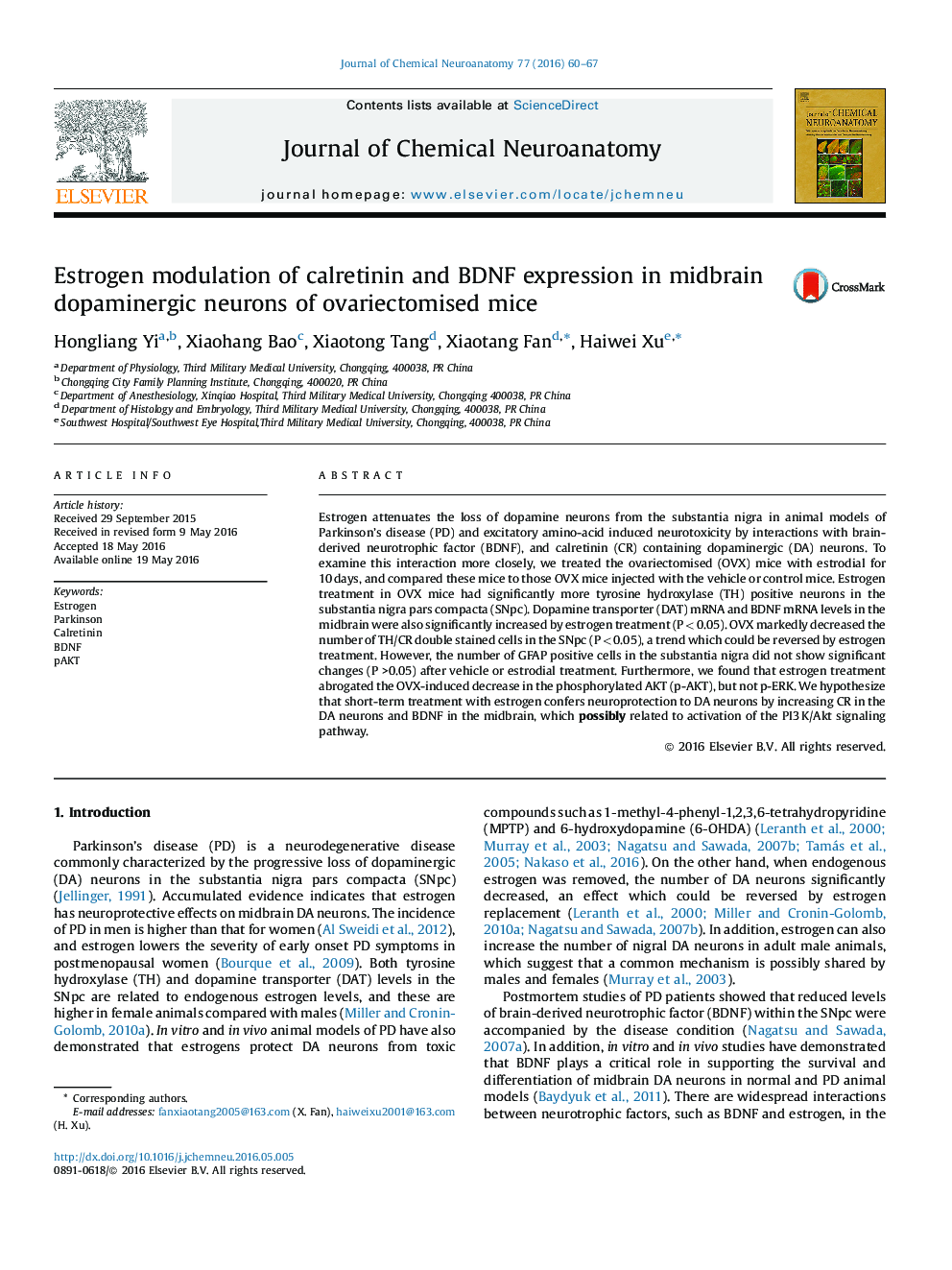| Article ID | Journal | Published Year | Pages | File Type |
|---|---|---|---|---|
| 1988703 | Journal of Chemical Neuroanatomy | 2016 | 8 Pages |
•Estradiol treatment rescued the dopaminergic neurons loss in the midbrain caused by ovariectomy.•Estradiol replacement significantly increased DAT and BDNF expression in the midbrain.•Estradiol reversed the decline of calretinin in the dopaminergic neurons.•AKT was possibly involved in the neuroprection of estrogen on DA neuron in the midbrain.
Estrogen attenuates the loss of dopamine neurons from the substantia nigra in animal models of Parkinson’s disease (PD) and excitatory amino-acid induced neurotoxicity by interactions with brain-derived neurotrophic factor (BDNF), and calretinin (CR) containing dopaminergic (DA) neurons. To examine this interaction more closely, we treated the ovariectomised (OVX) mice with estrodial for 10 days, and compared these mice to those OVX mice injected with the vehicle or control mice. Estrogen treatment in OVX mice had significantly more tyrosine hydroxylase (TH) positive neurons in the substantia nigra pars compacta (SNpc). Dopamine transporter (DAT) mRNA and BDNF mRNA levels in the midbrain were also significantly increased by estrogen treatment (P < 0.05). OVX markedly decreased the number of TH/CR double stained cells in the SNpc (P < 0.05), a trend which could be reversed by estrogen treatment. However, the number of GFAP positive cells in the substantia nigra did not show significant changes (P >0.05) after vehicle or estrodial treatment. Furthermore, we found that estrogen treatment abrogated the OVX-induced decrease in the phosphorylated AKT (p-AKT), but not p-ERK. We hypothesize that short-term treatment with estrogen confers neuroprotection to DA neurons by increasing CR in the DA neurons and BDNF in the midbrain, which possibly related to activation of the PI3 K/Akt signaling pathway.
